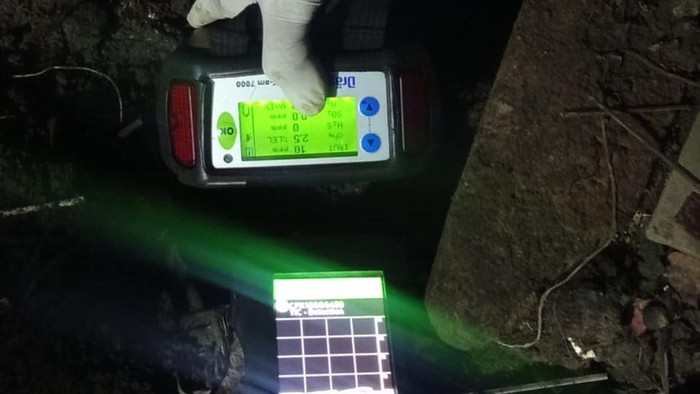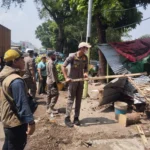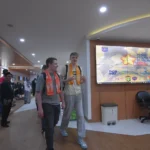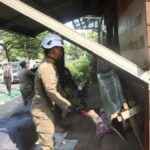Jakarta –
A video showing smoke emerging from beneath a lamppost on Jalan Raya Bogor KM 35, Depok, went viral on social media. The Chemical, Biological, Radiological, and Nuclear (KBRN) Unit of Pasgegana Korbrimob Polri investigated the incident.
The inspection was conducted on Tuesday night. The team was equipped with a Mitsubishi Triton operational vehicle and standard KBRN detection and protection gear, including CEMPRO X, THRED ID, XAM 7000, and HAZMAT ID.
The team coordinated with the Cimanggis Police Station before conducting field tests starting at 10:00 PM using detection equipment to analyze the air composition in the area. No hazardous gases were detected.
“The test results confirmed no hazardous gases at the scene. All parameters were normal. The KBRN team concluded operations at 12:30 AM and returned to headquarters,” the statement said.
The operation followed official procedures, including a KBRN Handling Order and an Incident Report.
“This effort demonstrates Korps Brimob Polri’s swift response in safeguarding the public from potential chemical and hazardous gas threats,” the statement concluded.
Earlier, a video showed hot smoke rising from beneath a lamppost on Jalan Raya Bogor, Depok, which went viral on social media. Transportation officials inspected the site.
Observations revealed smoke coming from the ground near the lamppost, emitting a sulfur-like odor. The lamppost was adjacent to a drainage ditch.
Residents and Depok Transportation Department technicians examined the site, digging around the lamppost to locate the smoke source. The smoke originated beneath the lamppost’s cables.
Officials measured the smoke’s temperature, confirming it was extremely hot.
The Depok City Public Street Lighting (PJU) team deactivated the electrical supply to the lamppost. Despite this, smoke continued to emerge from underground.
“Today, the Depok PJU team inspected the site on Jalan Raya Bogor following reports of smoke from the cables. We checked the PJU lamp and cut the power, but the smoke persisted from underground. The lamp is unrelated to the smoke source,” a technician explained.






